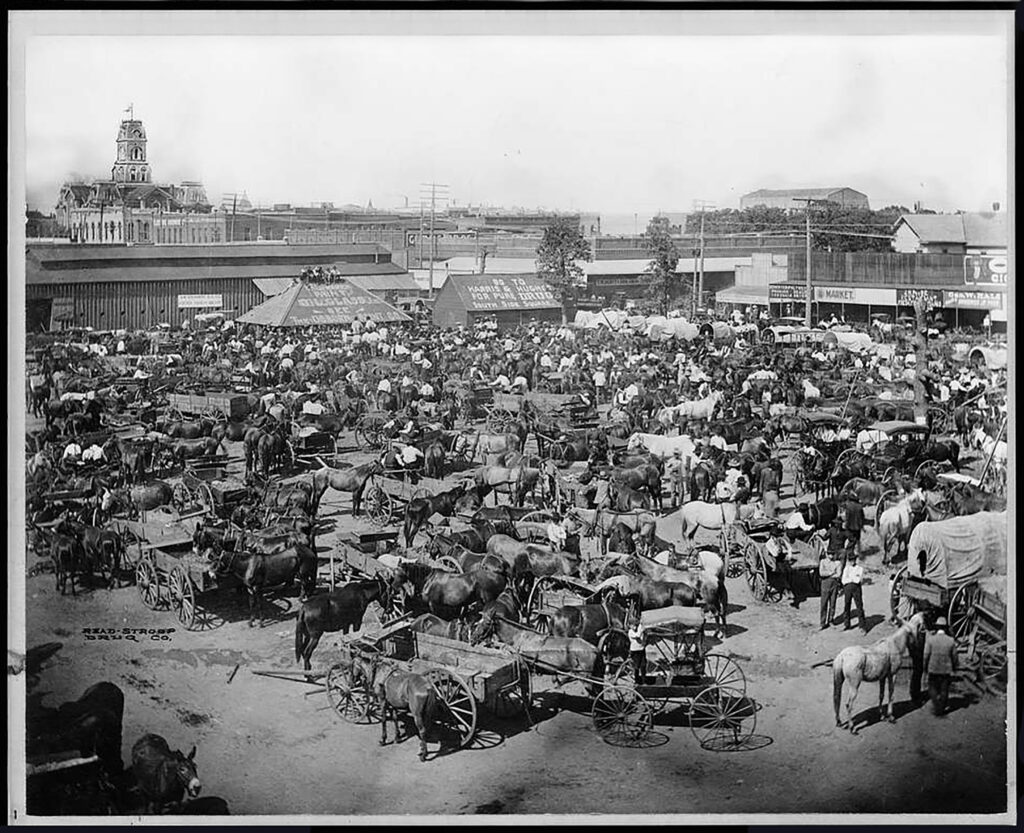The ‘town square’ was an integral city function long before Old World explorers brought them to the Americas. As far back as the Bronze Age, squares have been a hub of activity—a place to gather to celebrate, receive information, conduct business, or simply sit and enjoy the buzz of community activity/life. While urban America may have modernized its town squares into Walmarts or parking lots, in most parts of suburban and rural Texas, town and city squares remain not only a center for food and fun, they are also part of what keeps us connected to our past.

A LITTLE BACKGROUND
In the late 17th century, Spain was busy creating settlements in the American southwest, and in 1718 the first Spanish-speaking settlers began to group around the San Antonio River. At that time, the Spanish Empire decreed that every town it started had to have a central square, so our earliest towns and cities followed suit with the tradition of the ancients.
Later, other European immigrants built squares according to their own traditions, primarily to nurture townships and for neighbors to see and help each other through harsh winters. Over time, civic interaction began to spring up organically as the earliest town squares were gathering spaces located at the geographic center of the town, which allowed settlers and visitors alike to reach and benefit from the aggregate activity.
Even government took place in the square, where citizens were already present, until city halls and courthouses were constructed. This reflected a specific trend that law and order was important for early Texans—unlike pilgrim-era immigrants who were seeking religious liberty and built their New England squares around white-steeple churches.
The square is still the public living room.
~ Ray Oldenburg, Project for Public Spaces
LOCAL CENTERS
Many of our Williamson County squares filled those social and government needs for their communities until growth began to stretch beyond the downtown areas and outlier residents found retail, services, and restaurants closer to home. Building owners in the 1950s and 60s modernized their facades by covering the historic architecture with stucco and other material so, by the 1970s, many had lost their previous Victorian beauty. But, as new construction costs rose, renewal of historic sites became profitable and Texas’ Main Street program helped transition many buildings back to their former glory, creating an ‘old town’ ambiance that has been attracting tourists and foot traffic once again.
TODAY’S DOWNTOWNS
When technology took off, mainstream and social media created an environment that provided information at our fingertips, so we no longer need the town square for news or to conduct business. However, as the 21st century marches on, our reasons for visiting local squares have returned, somewhat, to what they were 150 years ago – buying fresh produce and artisan products, enjoying festivals, dining and celebrating, days out with the family, and passive people watching. Consequently, the modern square has re-emerged as a place for residents and visitors to be intentional about gathering in person for celebrations and civic discussion. And, as squares are reborn, they become physical magnets for social gatherings that are more important than ever.
Sadly, many of our state’s majestic courthouses look out over empty storefronts. But, unlike big cities, a vibrant town square can really exist only in a small town, a place compact enough to have a single focus, and with the help of the Main Street program, Shop Small Saturdays, and similar campaigns, many are making a comeback. To go to Texas’ town squares today is to step back into history, to a time when small towns were a regular destination for those who lived on farms and ranches. It is a place that continues to attract shoppers and strollers as well as those who seek art and education.
In a great marriage between history and the technological age, many have even taken to creating bucket lists and rankings of Texas town squares to visit at Christmas or year round. Scan the code to review one such listing that includes the Georgetown Square, also known as the Most Beautiful Town Square in Texas.
